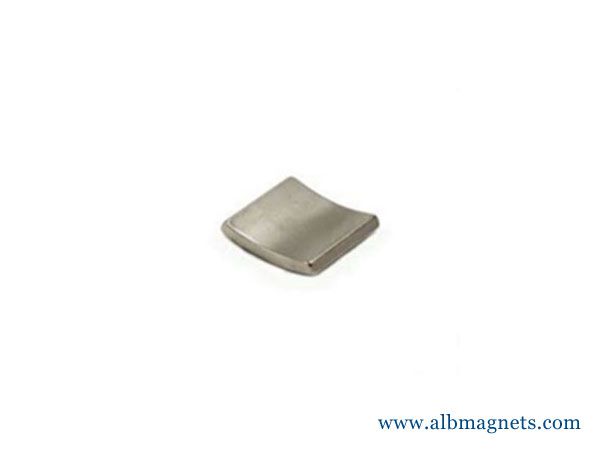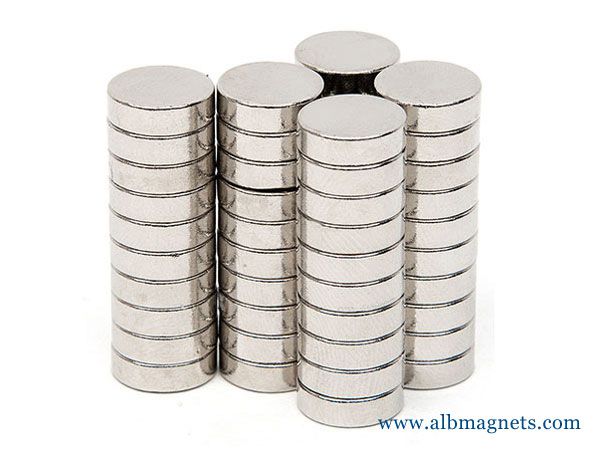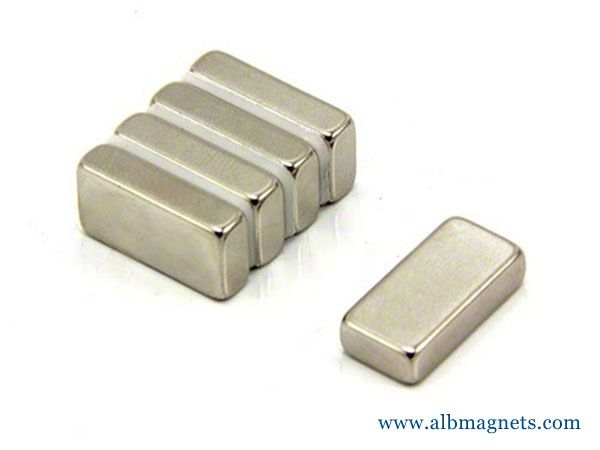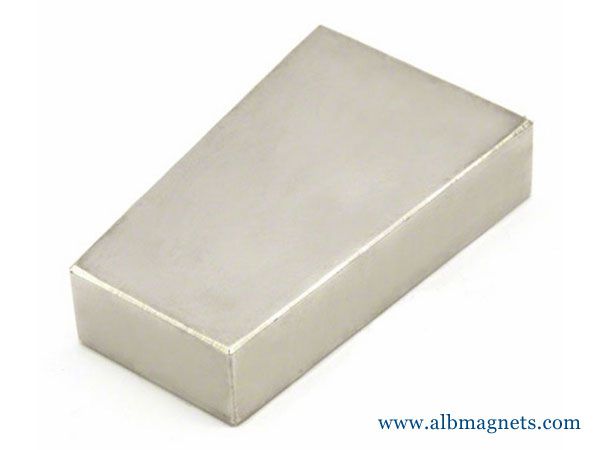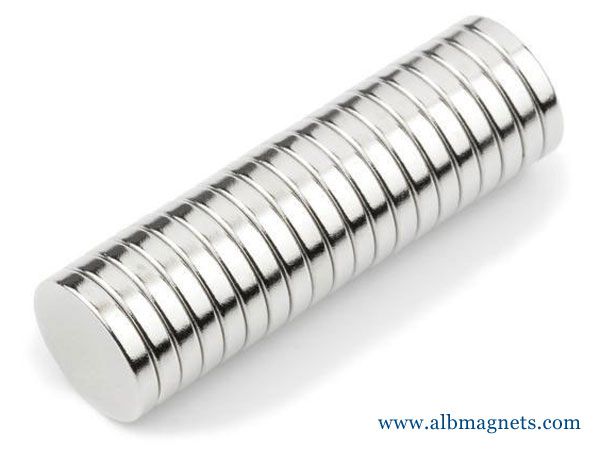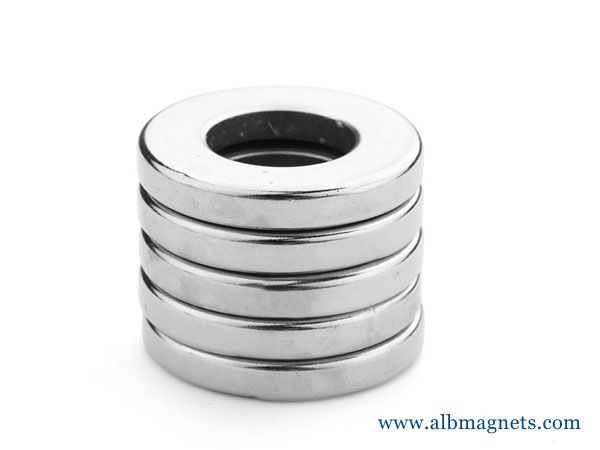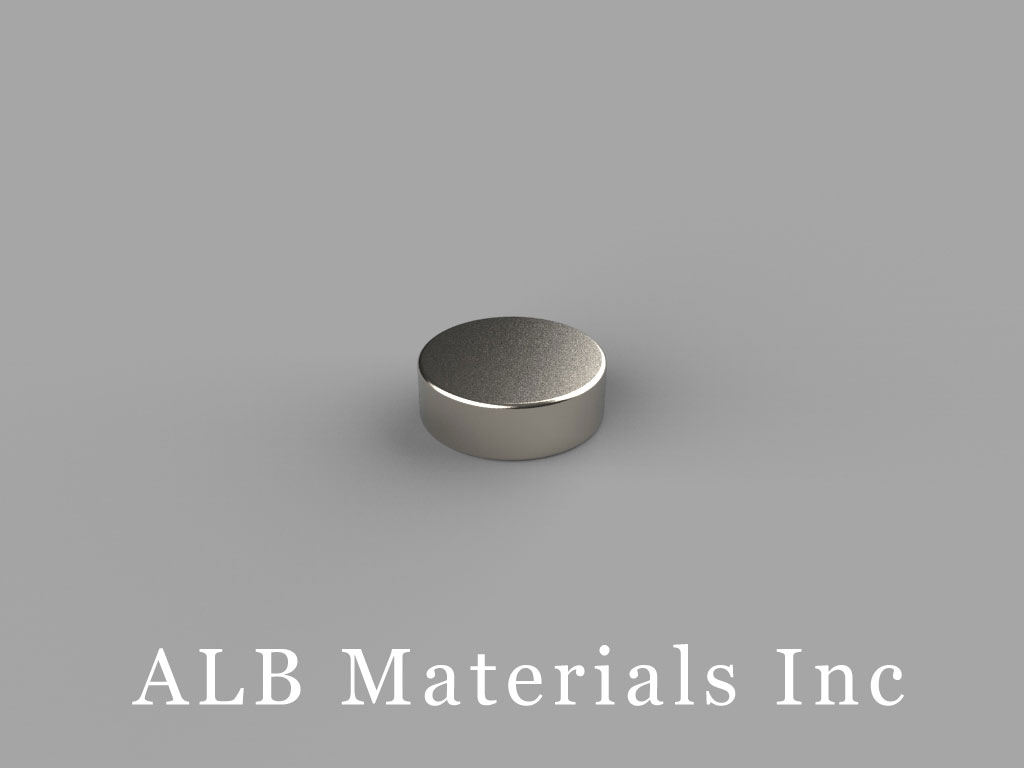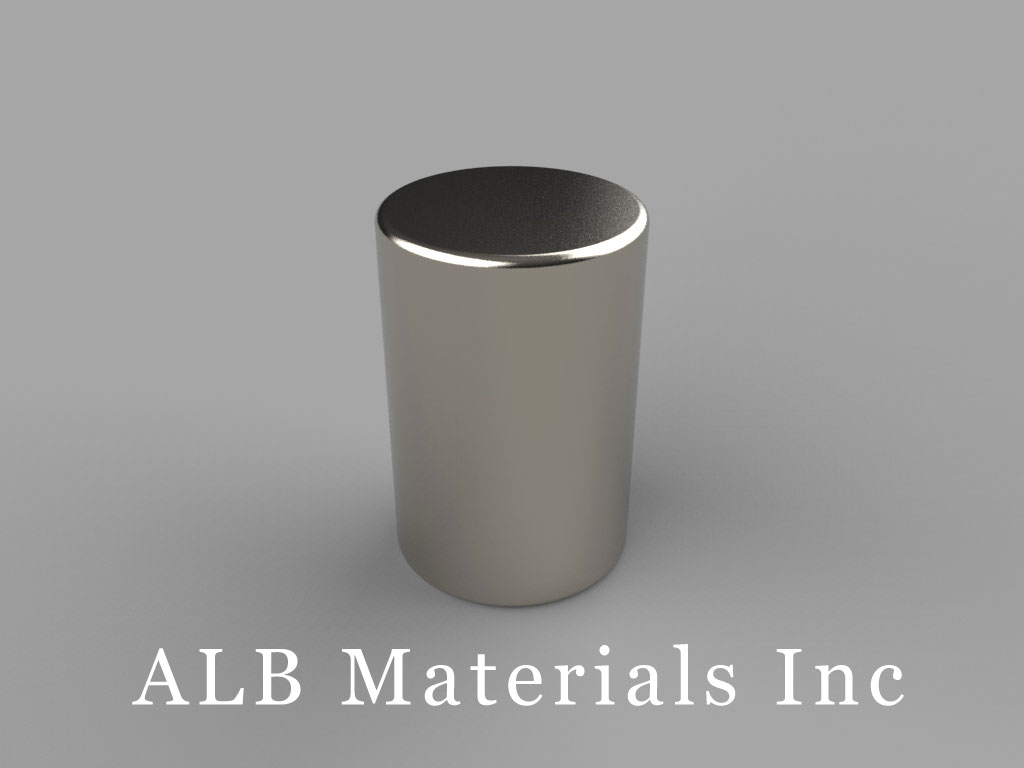401 Ryland St. Ste 200-A,
Reno, NV 89502
United States
E-mail: sales@albmaterials.com
- B333-N52 Neodymium Magnets, 3/16 inch x 3/16 inch x 3/16 inch thick
- D46 Neodymium Magnets, 1/4 inch dia. x 3/8 inch thick
- DA9 Neodymium Magnets, 5/8 inch dia. x 9/16 inch thick
- D28 Neodymium Magnets, 1/8 inch dia. x 1/2 inch thick
- DC6-N52 Neodymium Magnets, 3/4 inch dia. x 3/8 inch thick
- D48-N52 Neodymium Magnets, 1/4 inch dia. x 1/2 inch thick
- DEA Neodymium Magnets, 7/8 inch dia. x 5/8 inch thick
- DD4 Neodymium Magnets, 13/16 inch dia. x 1/4 inch thick
- B-W7H3L25-N50 Neodymium Magnet, 25x7x3mm Block Magnet
- DZX0X0-N52 Neodymium Magnets, 4 inch dia. x 1 inch thick
- DFX8 Neodymium Magnets, 15/16 inch dia. x 1 1/2 inch thick
- BCA4 Neodymium Magnets, 3/4 inch x 5/8 inch x 1/4 inch thick
- D5x2mm Neodymium Magnet, 5 x 2mm Disc Magnet
- D-D10H5-N52 Neodymium Magnet, 10x5mm Disc Magnet
- D3x5mm Neodymium Magnet, 3 x 5mm Cylinder Magnet
- DX88 Neodymium Magnets, 1 1/2 inch dia. x 1/2 inch thick
10 Examples Of Magnetic Materials
10 examples of magnetic materials
Classes of Magnetic Materials
The origin of magnetism lies in the orbital and spin motions of electrons and how the electrons interact with one another.
The best way to introduce the different types of magnetism is to describe how materials respond to magnetic fields.
This may be surprising to some, but all matter is magnetic.
It's just that some materials are much more magnetic than others.
The main distinction is that in some materials there is no collective interaction of atomic magnetic moments, whereas in other materials there is a very strong interaction between atomic moments.
The magnetic behavior of materials can be classified into the following five major groups:
Magnetic Properties of some common minerals
Materials in the first two groups are those that exhibit no collective magnetic interactions and are not magnetically ordered.
Materials in the last three groups exhibit long-range magnetic order below a certain critical temperature.
Ferromagnetic and ferrimagnetic materials are usually what we consider as being magnetic (ie., behaving like iron).
The remaining three are so weakly magnetic that they are usually thought of as "nonmagnetic".
1. Diamagnetism
Diamagnetism is a fundamental property of all matter, although it is usually very weak.
It is due to the non-cooperative behavior of orbiting electrons when exposed to an applied magnetic field.
Diamagnetic substances are composed of atoms that have no net magnetic moments (ie., all the orbital shells are filled and there are no unpaired electrons).
However, when exposed to a field, a negative magnetization is produced and thus the susceptibility is negative.
If we plot M vs H, we see:
Note that when the field is zero the magnetization is zero.
The other characteristic behavior of diamagnetic materials is that the susceptibility is temperature independent.
Some well known diamagnetic substances, in units of 10-8 m3/kg, include: quartz (SiO2) -0.62
2. Paramagnetism
This class of materials, some of the atoms or ions in the material have a net magnetic moment due to unpaired electrons in partially filled orbitals.
One of the most important atoms with unpaired electrons is iron.
However, the individual magnetic moments do not interact magnetically, and like diamagnetism, the magnetization is zero when the field is removed.
In the presence of a field, there is now a partial alignment of the atomic magnetic moments in the direction of the field, resulting in a net positive magnetization and positive susceptibility.
In addition, the efficiency of the field in aligning the moments is opposed by the randomizing effects of temperature.
This results in a temperature-dependent susceptibility, known as the Curie Law.
At normal temperatures and in moderate fields, the paramagnetic susceptibility is small (but larger than the diamagnetic contribution).
Unless the temperature is very low (<<100 K) or the field is very high paramagnetic susceptibility is independent of the applied field.
Under these conditions, paramagnetic susceptibility is proportional to the total iron content.
Many iron-bearing minerals are paramagnetic at room temperature.
Some examples, in units of 10-8 m3/kg, include:
Montmorillonite (clay) 13
Siderite(carbonate) 100
Pyrite (sulfide) 30
The paramagnetism of the matrix minerals in natural samples can be significant if the concentration of magnetite is very small.
In this case, a paramagnetic correction may be needed.
3. Ferromagnetism
When you think of magnetic materials, you probably think of iron, nickel or magnetite.
Unlike paramagnetic materials, the atomic moments in these materials exhibit very strong interactions.
These interactions are produced by electronic exchange forces and result in a parallel or antiparallel alignment of atomic moments.
Exchange forces are very large, equivalent to a field on the order of 1000 Tesla, or approximately 100 million times the strength of the earth's field.
The exchange force is a quantum mechanical phenomenon due to the relative orientation of the spins of two-electron.
Ferromagnetic materials exhibit parallel alignment of moments resulting in large net magnetization even in the absence of a magnetic field.
The elements Fe, Ni, and Co and many of their alloys are typical ferromagnetic materials.
Two distinct characteristics of ferromagnetic materials are their
(1) spontaneous magnetization and the existence of
(2) magnetic ordering temperature
Spontaneous Magnetization
The spontaneous magnetization is the net magnetization that exists inside a uniformly magnetized microscopic volume in the absence of a field.
The magnitude of this magnetization, at 0 K, is dependent on the spin magnetic moments of electrons.
A related term is the saturation magnetization which we can measure in the laboratory.
The saturation magnetization is the maximum induced magnetic moment that can be obtained in a magnetic field (Heat);
beyond this field, no further increase in magnetization occurs.
The difference between spontaneous magnetization and the saturation magnetization has to do with magnetic domains (more about domains later).
Saturation magnetization is an intrinsic property, independent of particle size but dependent on temperature.
There is a big difference between paramagnetic and ferromagnetic susceptibility.
As compared to paramagnetic materials, the magnetization in ferromagnetic materials is saturated in moderate magnetic fields and at high (room-temperature) temperatures:
Heat Tesla
1000-10000
Curie Temperature
Even though electronic exchange forces in ferromagnets are very large, thermal energy eventually overcomes the exchange and produces a randomizing effect.
This occurs at a particular temperature called the Curie temperature (TC).
Below the Curie temperature, the ferromagnet is ordered and above it, disordered.
The saturation magnetization goes to zero at the Curie temperature.
A typical plot of magnetization vs temperature for magnetite is shown below.
The Curie temperature is also an intrinsic property and is a diagnostic parameter that can be used for mineral identification.
However, it is not foolproof because different magnetic minerals, in principle, can have the same Curie temperature.
Hysteresis
In addition to the Curie temperature and saturation magnetization, ferromagnets can retain a memory of an applied field once it is removed.
This behavior is called hysteresis and a plot of the variation of magnetization with a magnetic field is called a hysteresis loop.
Another hysteresis property is the coercivity of remanence (Hr).
This is the reverse field which, when applied and then removed, reduces the saturation remanence to zero.
It is always larger than the coercive force.
The initial susceptibility (χ0) is the magnetization observed in low fields, on the order of the earth's field (50-100 μT).
The various hysteresis parameters are not solely intrinsic properties but are dependent on grain size, domain state, stresses, and temperature.
Because hysteresis parameters are dependent on grain size, they are useful for the magnetic grain sizing of natural samples.
4. Ferrimagnetism
In ionic compounds, such as oxides, more complex forms of magnetic ordering can occur as a result of the crystal structure.
One type of magnetic ordering is called ferrimagnetism.
A simple representation of the magnetic spins in a ferrimagnetic oxide is shown here.
The magnetic structure is composed of two magnetic sublattices (called A and B) separated by oxygens.
The exchange interactions are mediated by the oxygen anions.
When this happens, the interactions are called indirect or superexchange interactions.
The strongest superexchange interactions result in an antiparallel alignment of spins between the A and B sublattice.
In ferrimagnets, the magnetic moments of the A and B sublattices are not equal and result in a net magnetic moment.
Ferrimagnetism is therefore similar to ferromagnetism.
It exhibits all the hallmarks of ferromagnetic behavior- spontaneous magnetization, Curie temperatures, hysteresis, and remanence.
However, Ferro- and ferrimagnets have very different magnetic ordering.
Magnetite is a well known ferrimagnetic material.
Indeed, magnetite was considered a ferromagnet until Néel in the 1940s, provided the theoretical framework for understanding ferrimagnetism.
Crystal Structure of Magnetite
Magnetite, Fe3O4 crystallizes with the spinel structure.
The large oxygen ions are close-packed in a cubic arrangement and the smaller Fe ions fill in the gaps.
The gaps come in two flavors:
tetrahedral site: Fe ion is surrounded by four oxygens
octahedral site: Fe ion is surrounded by six oxygens
The tetrahedral and octahedral sites form the two magnetic sublattices, A and B respectively.
The spins on the A sublattice are antiparallel to those on the B sublattice.
The two crystal sites are very different and result in complex forms of exchange interactions of the iron ions between and within the two types of sites.
The structural formula for magnetite is
[Fe3+]A [Fe3+,Fe2+]B O4
This particular arrangement of cations on the A and B sublattice is called an inverse spinel structure.
With negative AB exchange interactions, the net magnetic moment of magnetite is due to the B-site Fe2+.
5. Antiferromagnetism
If the A and B sublattice moments are exactly equal but opposite, the net moment is zero.
This type of magnetic ordering is called antiferromagnetism.
The clue to antiferromagnetism is the behavior of susceptibility above a critical temperature, called the Néel temperature (TN).
Above TN, the susceptibility obeys the Curie-Weiss law for paramagnets but with a negative intercept indicating negative exchange interactions.
Crystal Structure of Hematite
Hematite crystallizes in the corundum structure with oxygen ions in a hexagonal close-packed framework.
The magnetic moments of the Fe3+ ions are ferromagnetically coupled within specific c-planes but antiferromagnetically coupled between the planes.
Above -10°C, the spin moments lie in the c-plan but are slightly canted.
This produces a weak spontaneous magnetization within the c-plan (σs = 0.4 Am2/kg).
Below -10°C, the direction of the antiferromagnetism changes and becomes parallel to the c-axis;
there is no spin canting and hematite becomes a perfect antiferromagnet.
This spin-flop transition is called the Morin transition.
List of Metals That Are Attracted to Magnets
Three types of metals interact with magnetic fields: ferromagnetic, paramagnetic and diamagnetic metals.
Ferromagnetic metals are strongly attracted to magnets;
the rest are not.
Magnets also attract paramagnetic metals, but very weakly.
Diamagnetic metals repel the magnet, though the force is typically very weak.
Ferromagnetic Metals
Ferromagnetic metals are strongly attracted by a magnetic force.
The common ferromagnetic metals include iron, nickel, cobalt, gadolinium, dysprosium, and alloys such as steel that also contain specific ferromagnetic metals such as iron or nickel.
Ferromagnetic metals are commonly used to make permanent magnets.
Non-Attracting Metals
A magnet will weakly attract paramagnetic metals such as magnesium, molybdenum and tantalum are weakly attracted to a magnetic force.
The attractive force is about a million times weaker than the force attracting ferromagnetic materials;
so you'll never feel the attraction from holding a magnet to a piece of magnesium, for example.
Only very sensitive scientific equipment can measure the weak force.
Diamagnetic metals don't attract magnets - they repel them, though weakly.
Examples include copper, carbon, gold, silver, lead and bismuth.
The repelling force is weak for most of these metals, though certain types of pure graphite can "float" a strong magnet.
Magnetic And Non-Magnetic Materials
We have now looked at a number of ways in which matter can be grouped, such as into metals, semi-metals, and non-metals;
electrical conductors and insulators, and thermal conductors and insulators.
One way in which we can further group metals is to divide them into those that are magnetic and those that are non-magnetic.
Magnetism is a force that certain kinds of objects, which are called 'magnetic' objects, can exert on each other without physically touching.
A magnetic object is surrounded by a magnetic 'field' that gets weaker as one moves further away from the object.
A metal is said to be ferromagnetic if it can be magnetized (i.e.made into a magnet).
If you hold a magnet very close to a metal object, it may happen that its own electrical field will be induced and the object becomes magnetic.
Some metals keep their magnetism for longer than others.
Look at iron and steel for example.
Iron loses its magnetism quite quickly if it is taken away from the magnet.
Steel, on the other hand, will stay magnetic for a longer time.
Steel is often used to make permanent magnets that can be used for a variety of purposes.
Magnets are used to sort the metals in a scrap yard, in compasses to find direction, in the magnetic strips of videotapes and ATM cards where information must be stored, in computers and TV's, as well as in generators and electric motors.
You can test whether an object is magnetic or not by holding another magnet close to it.
If the object is attracted to the magnet, then it too is magnetic.
Find five objects in your classroom or your home and test whether they are magnetic or not.
Fun With Magnets
Materials can be classified based on the response towards a magnet.
Let us perform an activity to find how different materials respond to a magnet.
Properties and Applications of Magnets
Collect different materials from your surroundings like Iron nail, brass screw, aluminum foil, plastic comb, coin, sewing needle, copper wire, aluminum foil, glass marble, eraser, stainless steel spoon, plastic ruler, pencil, etc.
Now bring a magnet close to the objects.
Observation: We will observe that some materials like Iron nail, Sewing needle, and coin are attracted to a magnet while the other substances like a brass screw, Aluminium foil, plastic comb, etc do not get attracted to a magnet.
1. Magnetic Materials
Those materials which are attracted b a magnet are magnetic materials.
Iron, Nickel, and Cobalt are the magnetic substances as objects made up of these materials are attracted by a magnet.
Also, magnetic materials can be magnetized or we can say that magnetic materials can be converted into magnets.
2. Application of Magnetic and Non-Magnetic Materials
We can use magnetic and non-magnetic properties of a substance in daily life for ease of working.
some of them are –
If a large number of pins are fallen from the pin box on the ground, they can be easily collected by using a magnet as pins are made up of iron which is a magnetic material.
If a carpenter mixes iron nails with wood shavings they can be separated easily by using the method of magnetic separation.
A magnet is brought close to the mixture.
Iron nails get attracted to the magnet and stick to it whereas wooden shavings which are made up of non-magnetic material will not be attracted by the magnet.
Activity II
Rohan shows magic to his friends and gains a lot of applause for it.
He keeps a steel car on a wooden table.
Without moving the car by directly pushing it, he is able to move the car.
His friends are amazed and wonder how is it possible.
What is the secret behind his magic? Rohan actually keeps a magnet under the table.
By moving the magnet under the table, he is able to move the car kept on the table without moving it.
This activity shows that the force of a magnet can pass through a non-magnetic substance like the wood in this case.
What will be the observation if the tabletop is made up of iron instead of wood? In this case, the car will not move because the force of a magnet cannot pass through magnetic materials like Iron and Steel objects.
Some Interesting Facts About Magnet
The first known magnets are hard to block stones called a lodestone.
It is believed to be discovered by Shepherd Magnes who accidentally discovered it while feeding his sheep.
Lodestone which is a natural magnet contains an iron mineral called magnetite.
Magnets are made in different shapes for example bar magnet, horseshoe magnet, disc magnet, etc.
Which Metals Are Magnetic?
Common examples are: Alnico alloy, an iron alloy with aluminum, nickel and cobalt. Alnico alloys make strong permanent magnets. Ferrite, a ceramic compound composed of iron oxide and other metallic elements. Ferrites are used in refrigerator magnets and small electric motors.
Magnets were first discovered by ancient civilizations going back 2,500 years, and by the 12th and 13th centuries AD, magnetic compasses were commonly used for navigation in China and Europe.
Today, magnets are an essential part of modern technology.
They are found in almost any appliance you can name, from mobile phone speakers to electric motors, washing machines and air conditioners.
The magnet industry continues to grow due to the increased demand for magnetic circuit components widely used in industrial equipment, while technological advances enable magnets to be 60 times as strong as they were 90 years ago.
Which Metals Are Magnetic?
Some alloys of rare earth metals
These magnetic metals fall under the categories:
Permanent Magnets
Neodymium Magnets
Permanent Magnets
When people think of magnets, they’re often thinking of permanent magnets.
These are objects which can be magnetized to create a magnetic field.
The most common example is the refrigerator magnet, used to hold notes on our refrigerator door.
The most common metals used for permanent magnets are iron, nickel, cobalt and some alloys of rare earth metals.
There are two types of permanent magnets: those from “hard” magnetic materials and those from “soft” magnetic materials. “Hard” magnetic metals tend to stay magnetized over a long period.
Common examples are:
Alnico alloy, an iron alloy with aluminum , nickel and cobalt.
Alnico alloys make strong permanent magnets.
They are widely used in industrial and consumer electronics.
For example, in large electric motors, microphones, loudspeakers, electric guitar pickups and microwaves.
Ferrite, a ceramic compound composed of iron oxide and other metallic elements.
Ferrites are used in refrigerator magnets and small electric motors.
“Soft” magnetic metals can be magnetized but lose their magnetism quickly.
Common examples are iron-silicon alloys and nickel-iron alloys.
These materials are typically used in electronics, for example transformers and magnetic shielding.
Electromagnets
Electromagnets are made from a coil of copper wire wound around a core made from iron, nickel or cobalt.
The coiled wire will generate a magnetic field when an electric current passes through it, however, the magnetic field disappears the moment the current stops.
Electromagnets need electricity to work.
Their usefulness lies in the ability to vary the strength of the magnetic field through controlling the electrical current in the wire.
Electromagnets are commonly used in electric motors and generators.
They both work on the scientific principle of electromagnetic induction, discovered by scientist Michael Faraday in 1831, which says that a moving electric current will create a magnetic field, and vice versa.
In electric motors, the electric current generates a magnetic field which moves the motor.
In generators, an external force such as wind, flowing water or steam rotates a shaft which moves a set of magnets around a coiled wire, thus producing an electric current.
Electromagnets are also used to flick the switches in relays, used in telephone exchanges, railway signaling and traffic lights.
Junkyard cranes are also fitted with electromagnets which are used to pick up and drop large vehicles with ease.
These electromagnets take the form of a round plate fitted to the end of the crane.
A modern train system known as Maglev (short for magnetic levitation) uses electromagnets to levitate the train above the rail.
This reduces friction and allows the train to move at tremendous speed.
Advanced applications of electromagnets include magnetic resonance imaging (MRI) machines, and particle accelerators (like the Large Hadron Collider).
Neodymium Magnets
Neodymium magnets are a type of rare-earth magnet comprised of an alloy of neodymium, iron and boron.
They were devised in 1982 by General Motors and Sumitomo Special Metals.
Neodymium magnets are the strongest type of permanent magnet commercially available.
They are used when strong permanent magnets are required, particularly in cordless tool motors, hard disk drives and magnetic fasteners.
Turning Non-Magnetic Metals Into Magnets
Copper and manganese are not normally magnetic.
However, a ground-breaking new technique, developed by Oscar Cespedes of the University of Leeds, UK, has transformed copper and manganese into magnets.
Cespedes and his team fabricated films of copper and manganese on carbon structures called Buckyballs.
When an external magnetic field was applied and removed, the films retained 10% of the magnetic field.
This new technique is set to provide a more biocompatible and environmentally-friendly way to manufacture MRI machines.
Other possible applications include use in wind turbines.
Wind turbines currently use iron cobalt and nickel with rare-Earth elements.
But these elements are expensive and tough to mine.
The breakthrough opens the possibilities to cheaper alternatives.
Metal Supermarkets
Metal Supermarkets is the world’s largest small-quantity metal supplier with over 85 brick-and-mortar stores across the US, Canada, and United Kingdom.
We are metal experts and have been providing quality customer service and products since 1985.
At Metal Supermarkets, we supply a wide range of metals for a variety of applications.
Our stock includes: stainless steel , alloy steel , galvanized steel , tool steel , aluminum , brass , bronze and copper .
Our hot rolled and cold rolled steel is available in a wide range of shapes including: bars, tubes, sheets and plates.
We can cut metal to your exact specifications.
Part of the content in this article is reproduced from other media for the purpose of transmitting more information and does not mean that this website agrees with its views or confirms the authenticity of its content. It shall not bear direct responsibility and joint liability for the infringement of such works.
If there is any infringement, bad information, error correction, and other issues in the content of this page, please contact us at info@albmaterials.com
Link to this article: https://www.albmagnets.com/blog/10-examples-of-magnetic-materials.html
How to choose and buy a strong neodymium magnet? ALBMagnets is a professional company for strong magnet design and manufacturing,
providing you with reliable N35, N38, N42, N52, N42SH and other grade super neodymium magnets and SmCo rare earth magnets.





